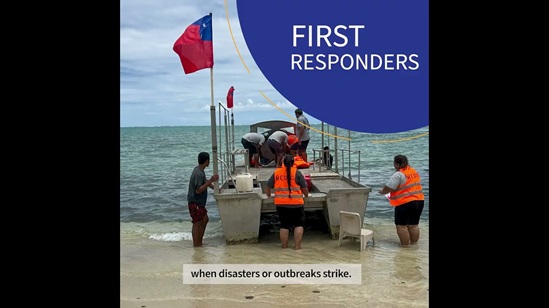Strengthening partnerships for emergencies
No single organization can respond effectively to a large-scale outbreak or disaster on their own. On the other hand, good coordination means we can leverage the strengths of each partner organization, share resources, avoid duplication, close gaps and reach more people with life-saving health services.
The annual Meeting of the Technical Advisory Group on the Asia Pacific Health Security Action Framework serves as a regional mechanism to monitor progress and promote partnerships for health security. Similarly, National Influenza Centres (NICs) based in both the Western Pacific and South-East Asian Regions come together every year to share updates on different influenza viruses, identify best practices and agree on action plans to combat the disease. These NICs also regularly share data to inform the Global Influenza Surveillance and Response System.
During an emergency, WHO can call on support from several networks including emergency medical teams, the Global Outbreak Alert and Response Network, the Health Cluster and Standby Partners. In addition to the Organization’s role as the Global Health Cluster lead agency, WHO engages with the broader humanitarian community through the Inter-Agency Standing Committee.








